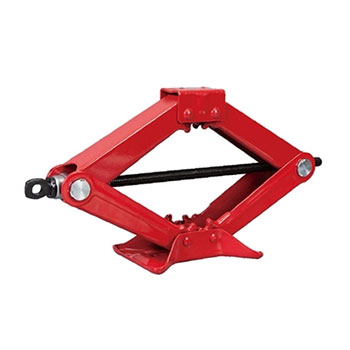How to Use a Scissor Jack?
Scissor jacks are common and effective tools used for lifting vehicles, supporting structures, or other tasks that require elevation. Below is a concise guide on how to properly use a scissor jack, compiled by ATO industrial automation.
Preparation
Before using a scissor jack, some preparatory steps are necessary. Firstly, ensure you choose an appropriate jack by selecting a model with the lifting capacity suitable for your needs. Secondly, choose a stable working surface to ensure the jack can securely support itself.
Inspect the Jack
Before using the scissor jack, inspect it for any damages. Check for obvious physical damage, such as broken straps or excessive wear on the piston rod. Ensure all parts of the jack move smoothly, including the extension and retraction of the piston rod and the smooth opening and closing of the scissor arms.
Secure Support
Before using the scissor jack, ensure the object to be lifted can be securely supported on the jack. Use objects like wooden boards or bricks to increase the support area and prevent sinking or sliding.
Position the Scissor Jack
Place the scissor jack under the object to be lifted, ensuring that the scissor arms make firm and secure contact. The scissor arms should be in a horizontal position, ensuring the force of the jack is applied vertically.
Use the Handle
Insert the handle into the transmission hole of the scissor jack, ensuring the handle's length is convenient for operation. Before inserting the handle, apply some lubricating oil to reduce friction.
Lift the Object
Position the handle appropriately and press down on the handle to start lifting the scissor jack. During the lifting process, pay attention to the handle's position, maintaining the correct angle to prevent instability or handle slippage.
Check Lifting Height
After lifting the object to the desired height, inspect the scissor jack for any obvious deformations or instability. Use measuring tools to check if the lifting height meets requirements.
Lower the Object
If it's necessary to lower the object, slowly release pressure on the handle to allow the scissor jack to descend gradually. Maintain control of the handle during the descent to prevent sudden drops and ensure safety.
Clean and Maintain
After using the scissor jack, perform cleaning and maintenance to extend its lifespan. Remove dirt and dust from the jack, inspect all components for normal functioning, and lubricate parts such as the piston rod if necessary.
A scissor jack is a commonly used lifting tool, and when used, attention should be paid to preparation, inspecting the jack, securing support, positioning the jack, using the handle, lifting the object, checking lifting height, lowering the object, and performing cleaning and maintenance. By correctly using the scissor jack, you can enhance work efficiency and ensure job safety. Familiarity with the proper use of a scissor jack is essential for effective practical application.

